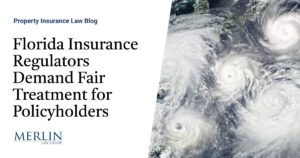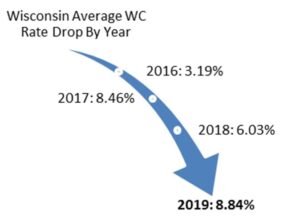Hazardous Hurricane Ian Flood Cars For Sale
We all saw the images of the devastation caused by Hurricane Ian, including vehicles floating in flood waters. It’s estimated that over 358,000 vehicles were submerged – many of them in highly corrosive salt water.
Live far away from Florida? You may think you don’t have to worry about flood cars from Hurricane Ian showing up near you. But flood cars are often shipped to auctions in other states and end up all over the map. Many will be resold in Florida, Georgia, Alabama, Mississippi, and the Carolinas. But others will be shipped to far-flung states. Flood car crooks target certain states because they have large car markets and can command higher prices. Like California, New York and Texas. Plus consumers there may not be on the lookout for flood cars, making them easy prey for scamsters.
New Cars Get Flooded Too
Even if you’re in the market for a new car, it’s important to be on high alert.
That’s because it’s not only used cars that get flooded. New cars that were submerged while parked on car lots at large, franchised new car dealerships are also declared a total loss. But that’s not the end of the road for those “brand new” cars, SUVs, and trucks. Instead of being crushed, water-logged cars are towed away and parked in row after row, covering acres of vacant land. They sit there with the sun beating down on them, causing mold, bacteria, and mildew to grow. Some are still festooned with seaweed and slathered in grime and slime.
Then they’re shipped to auction companies like Copart and Insurance Auto Auctions (IAA) that have ties to auto insurers. Copart and IAA brazenly trumpet the fact they have flood-damaged cars available. For example, on October 18, IAA offered 9,968 “Hurricane Ian” vehicles for sale. They sell them to the highest bidders, who can bid online. The buyers may be from distant states, or even other countries.
Unscrupulous characters buy flood cars at a discount, spiff them up, attempt to mask the musty odors, and quickly resell them. Car dealers are eager to snap them up. Then they sell them for top dollar, without any discount. That way, they not only make a fatter profit, they also are less likely to arouse suspicion that something’s wrong. If the car is marked down, buyers are more likely to be wary. In other words, the “normal” pricing is part of the deception.
Some car dealers sell severely damaged or flood cars as so-called “certified” vehicles, advertising that they passed a rigorous inspection and charging hefty markups. The bottom line: don’t trust any seller, whether they’re an individual or a car dealer. Check out the car yourself, before you buy.
Why avoid flood cars?
FLOOD CARS ARE UNSAFE
Flood cars are hazardous. Today’s cars are basically computers on wheels. All the sophisticated safety systems, including the braking, steering, stability control, and navigation features, are controlled by electronics and by millions of lines of computer code. Imagine dropping your personal computer into the ocean, and letting it soak. After it gets a dousing in salt water, even if you were able to start it up, the sensitive electronics are doomed to corrode.
FLOOD CARS ARE UNHEALTHY
Flood cars are harmful to your health. Besides being unsafe to drive, flood cars are hopelessly contaminated with spores, mold, bacteria, and various toxins. They’re prone to causing serious health problems, particularly for people with asthma, allergies, and compromised immune systems. Even if they’ve been cleaned up cosmetically and sprayed to mask the odors, they are basically rotting from the inside out.
FLOOD CARS ARE UNAFFORDABLE
Flood cars are inevitably going to have massive, expensive problems that defy repair. Worse, even if you pay extra to get a new or “nearly new” car with a warranty from the manufacturer, that warranty will be deemed to be void. Some consumers have found this out the hard way, paying top dollar for “new” vehicles that were submerged in a flood. They immediately experienced major problems. Then they were shocked and dismayed when the manufacturer refused to honor the warranty, citing the fact the car had been flooded and declared a total loss.
Extended service contracts are also void. Typically, service contracts exclude “pre-existing conditions” such as being wrecked or flooded. So you could end up paying a lot more for the coverage, but be unable to use it to cover expensive repairs.
If you try to resell the car, dealers or other consumers will most likely offer you far less than you paid, or still owe to a lender. Or they may flat-out refuse to buy it. Worst case scenario – you could get stuck with an expensive, unsafe lemon car you can’t drive, can’t fix, and can’t sell.
How to avoid flood cars
Don’t expect to find a mackerel on the manifold or a trout in the trunk. Scamsters are too smart for that. They scrub and clean the cars, spiffing them up cosmetically. They may remove the floor mats and even replace some of the upholstery. They spray cans of deodorizers in the interiors, to disguise unpleasant smells. So at first glance, the cars may appear pristine. But behind that appealing facade, they’re rotting from the inside out. So be sure to look deeper. The time to do this is BEFORE you agree to buy.
Here are steps you can take to stay safe and avoid hazardous flood cars and also steer clear of cars with deadly safety recall defects. To save you time and money, the easiest, least expensive steps are first. That way, you can eliminate the worst lemons before you spend more time or hard-earned dollars.
Step 1: Get the Vehicle Identification Number, or VIN. This is a unique number, usually 17 digits. It’s like the vehicle’s fingerprint. The VIN unlocks a treasure trove of information about a car’s past. Typically, the VIN is stamped on a small metal plate on the dashboard. It’s usually also on a sticker inside the driver door jamb, on the title, and on sales documents. It may also be displayed in ads.
Check FREE database of unsafe vehicles with deadly safety recall defects
Step 2: Enter the vehicle’s VIN at the website for the National Highway Traffic Safety Administration, here. This is quick, easy, and free. Auto manufacturers are required to provide information about deadly safety recall defects to this government website. If the vehicle has an unrepaired safety recall defect, it’s too risky to buy, even if it wasn’t flooded. When you check here first, you can save yourself from paying anything or taking any more time to look further.
Warning: The way auto manufacturers describe defects in their recall notices may make it seem like the defects are not a serious threat. But that can be deceiving. For example, a recall due to “floor mats” caused the tragic deaths of four members of a family in San Diego who were on their way to a soccer game when the defect caused the accelerator pedal to stick. BMW describes one recall defect as causing a “thermal event.” Translation: the car is prone to catching on fire, and bursting into flames.
Next: IF the vehicle passes the safety recall test
Step 3: Enter the VIN at the National Motor Vehicle Title Information System, or NMVTIS. This database of total loss vehicles is operated by the U.S. Department of Justice. All the U.S. states, except for Hawaii, participate and share data with NMVTIS. This is the best place to search next, specifically for total loss flood cars.
Consumers for Auto Reliability and Safety sued the U.S. DOJ and won, compelling the DOJ to issue federal rules that require each of these businesses, in all 50 states, to report every vehicle under 5 model years old that they declare a total loss to NMVTIS, within 30 days (many report daily):
▪ Auto insurers
▪ Self-insured entities, including large auto dealership chains and rental car companies
▪ Salvage pools and salvage auctions, such as Copart and Insurance Auto Auctions
▪ Junkyards
▪ Auto recyclers
▪ Scrap vehicle shredders
▪ Scrap metal processors
▪ Vehicle remarketers
NMVTIS is the only database where insurers must report vehicles they declare a total loss, within 30 days, in order to comply with federal law. When it comes to total loss vehicles, NMVTIS tends to be more up-to-date and complete than other databases, and often captures total loss vehicles that other databases miss. That’s largely because totaled vehicles must be reported to NMVTIS – even if they are not considered a total loss under relatively weak state laws, which frequently allow hazardous totaled vehicles to go undetected.
The DOJ has approved over a dozen NMVTIS data providers who charge a small amount (usually less than $10) to access NMVTIS’ total loss data. This is less expensive than Carfax or Autocheck. So check here first. If the vehicle shows up in NMVTIS because it was a total loss, play it safe and reject it.
NMVTIS is a very valuable resource, but it has limits. What’s not necessarily included in NMVTIS?
▪ Older vehicles, 5 model years or older – they are not required to be reported, although some businesses report older vehicles voluntarily
▪ Vehicles that are severely damaged, but not declared a total loss
Plus – sometimes major companies violate federal law and fail to report total loss vehicles to NMVTIS. So even if a vehicle doesn’t show up in NMVTIS, it’s not necessarily a clean bill of health. It’s still really important to take the next steps and get a car that passes the “NMVTIS test” inspected by a trustworthy automotive expert you choose yourself, and also check out the car yourself, in person.
Next: Visual inspection and test drive
Step 4: Look carefully for tell-tale signs of flood damage, including:
• Silt or other residue in odd places, like under the floor mats, in crevices, in the trunk, and inside the wheel well
• Rust or signs of corrosion
• Fogging inside headlamps or taillights
• Water lines in the passenger cabin, engine compartment, or trunk
• Musty smell, particularly when you turn on the air conditioning or heat
• Heavy scents from air fresheners or cleaning solutions
• Mold or mildew
• Used cars with brand-new upholstery
• Stalling, difficulty starting, electrical glitches, or other driveability issues that act up during a test drive
• Warning lights that illuminate on the dashboard
Other tell-tale signs:
• Title document stamped with a “brand” that indicates the vehicle was “salvage,” “junk” “rebuildable,” “water/flood” “rebuilt” “water-damaged” or simply “flood”
• Seller who refuses to show you the vehicle’s title prior to sale, making lame excuses for not letting you look it over carefully before you buy
• Signs the title was altered. Some crooks use white-out to cover up the “flood” brand or literally punch holes in the title to remove the brand, using a hole punch
• Vehicles with titles from Florida or other states hit hard by Hurricane Ian
Step 5: IF the car passes all of those tests, then the last step is to get it inspected by a trustworthy automotive technician you choose and pay for yourself. Do NOT rely on the seller to give you an honest inspection report. Many dealers advertise they only sell cars that pass their “150 point” or “172 point” inspection. This is designed to keep you from getting your own inspection done.
But they fail to fix deadly safety recall defects, and may also lie about flood damage. They count on the fact that most of their victims won’t bother to sue, and if they do, they can force them to submit to arbitration – a rigged system paid for by car dealers where victims almost always lose.
Here’s a good resource for finding a trustworthy, qualified automotive technician, based on ratings provided by other car buyers and vehicle owners: Mechanics Files
Usually, it costs about $100 for a thorough inspection. Look for auto techs who have been in business a long time and consistently receive top ratings. Ideally, they should be expert in repairing and inspecting the same brand / make that you are interested in buying. That way, they may also be able to tell you about problems you can expect that are common to that particular vehicle, and how much it would cost to fix them. Ask the technician if they would be willing to work with you and the seller to inspect the car where it’s located, using diagnostic tools that are portable. Unless they have something to hide, the seller should be willing to cooperate with you to get the inspection done.
More tips for avoiding flood car headaches:
Beware of “title washing.”
Crooked car dealers and others who traffic in flood cars sometimes engage in an illegal practice known as “title washing” to make it easier to sell severely damaged vehicles to unsuspecting car buyers. The crooks exploit loopholes in state laws to obtain supposedly “clean” titles, erasing title brands such as “salvage” or “flood.”
NMVTIS makes it more difficult for crooks to get away with laundering car titles across state lines. But it still happens.
Some states have a reputation for being title-washing states. Sleazy car dealers send titles with a “flood” brand to one of those states and within weeks, they obtain clean titles. Presto! Now they can advertise those dangerous cars as having “clean” or “clear” titles, show prospective buyers a “clean” title, and charge top dollar. The cars may never actually leave Florida, but now they have new, “clean” titles from another state.
For example, the office of Pennsylvania Attorney General Josh Shapiro cracked down on a title washing fraud ring that allegedly involved car dealers and companies in multiple states.
What about vehicle history reports from Carfax or Autocheck?
Sometimes obtaining a vehicle history report from Carfax or Autocheck can tell you more useful information about the vehicle’s history. For example, Carfax may have information about odometer readings, prior repairs, airbag deployments, and safety recalls, and may also show when a vehicle was sold before. In general, the more you find out about a vehicle’s history, the better. But….
Warning!
Carfax and Autocheck are notorious among auto fraud experts for being unreliable. Both databases tend to have a lot of holes. Many consumers complain they were shown a “clean” Carfax when they bought their car, then found out about a prior wreck or flood damage that didn’t show up until after it was too late.
Plus Carfax and Autocheck slip disclaimers into the fine print, aimed at taking away your rights. Their “buyback guarantees” are extremely difficult to enforce.
Bottom line: Vehicle history reports are definitely NOT a substitute for a personal inspection and an inspection by a trustworthy automotive expert you choose yourself.
What if you already bought a flood car?
If you find out that someone already sold you a flood car, get advice from an experienced auto fraud attorney. Even if it was sold “AS IS,” you may have protection under your state’s consumer protection laws, such as laws against committing fraud, engaging in unfair or deceptive acts or practices, or violating an implied warranty. The way the vehicle was advertised and what you were led to believe about the vehicle’s condition when you were shopping may be major factors in whether you have a good case. The website for the National Association of Consumer Advocates is a good resource for finding an auto fraud expert in your state.





